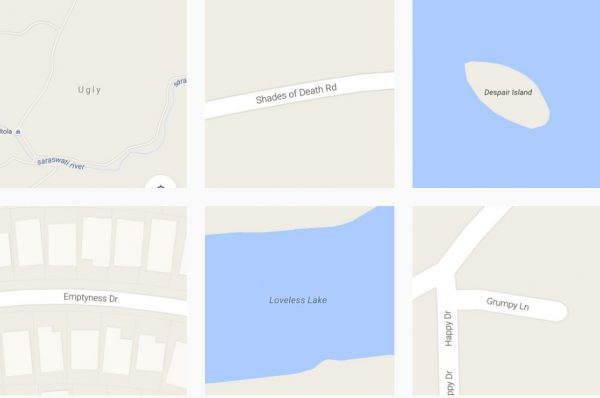In Tucson, Arizona, most roads running east-west are called streets while roads running north-south are labeled as avenues. But there is a hybrid type unique to this city: the stravenue, a portmanteau of street and avenue used for diagonal roads (abbreviated: Stra). This unusual convention aside, though, designations tend to be more consistent — and you can get pretty far just by understanding a few common ones.
In this Vox video, Phil Edwards takes you on an axonometric tour of an animated built environment, explaining the differences between various types of roads. Spanning city streets, rural routes and intercity connectors, here are some of the highlights:
- Road (Rd): any route connecting two points
- Street (St): has buildings on both sides, perpendicular to avenues
- Avenue (Ave): perpendicular to streets, may have trees on one side
- Boulevard (Blvd): wide city street with median and side vegetation
- Way (Way): small side street
- Lane (La): narrow and often rural
- Drive (Dr): long, winding road shaped by natural environments
- Terrace (Ter): wraps up and around a slope
- Place (Pl): no through traffic or dead end
- Court (Ct): ends in a circle or loop (like a plaza or square)
And at the larger, longer and faster end of the spectrum:
- Highway (Hwy): major public road connecting larger cities
- Freeway (Fwy): two or more lanes in each direction
- Expressway (Expy): divided highway for faster traffic
- Interstate (I): often goes between states but not always
- Turnpike (Tpke): usually an expressway with a toll booth
- Beltway (Bltwy): wraps around a city like a belt
- Parkway (Pkwy): usually has parkland on the side
- Causeway (Cswy): runs on embankment across water or wetland
New roads have endless naming options, which can lead to such depressing examples as Hopeless Way, Broken Dreams Drive and Suffering Street. But the second part — Way, Drive and Street in these instances — has a specific meaning (though uses still vary).

“They’re not just named at random,” explains Edwards. And while “there’s no rule book for building a city there are naming conventions that are surprisingly strong — ones you’ll find across the world. There are exceptions, but if you comb through postal service guides, state departments of transportation and dictionaries you can start to decipher a code behind our roads.”



Comments (5)
Share
Two things: I know of a “Divorce Court”. Still one of the most absurdly named thoroughfares I’ve seen. And also, I live on a “Trace,” one that’s fairly uncommon but that I steadfastly fight to have written correctly (without tacking a “Road” on the end).
The defining feature of a freeway is fully controlled access, with no intersections. Traffic (usually) flows freely without stop signs or traffic signals.
All Interstates are freeways, but not all freeways are Interstates.
Oh you colonials with your neat and tidy rules. I’m pretty sure here in Cambridge, UK, I could find:
A Road to nowhere
A Street with buildings on just one side
An Avenue parallel to a Street
A narrow Boulevard
A major Way
A wide Lane
A short straight Drive
A flat straight Terrace
And both Courts and Places that are through streets
I wish NC believed in half of that structure. New roads seem to be named willy-nilly. I live on a “drive” that was a “lane” before it was officially entered into the city records, but it definitely should be a “court.” But since it’s only like 3 houses long, should we just make a new one? “Nub” would be fine.
These rules prevented a literal boulevard of broken dreams